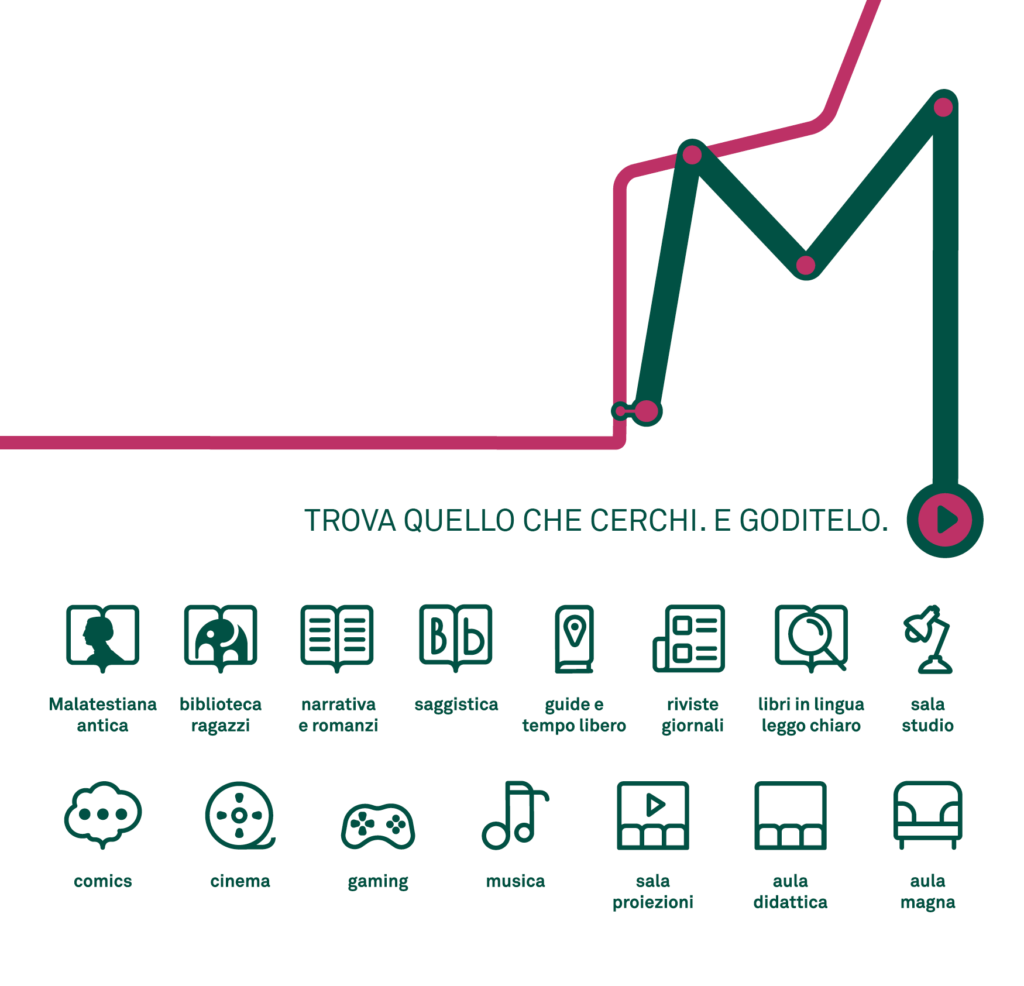Designing signage that takes users by the hand
Our cultural heritage is so vast that you can get lost, especially when exploring something new. Where do I start? What do I choose? The same applies to places that hold such a vast heritage, first and foremost libraries: we look for something important – perhaps we don’t even know what – and we get lost, sometimes even returning home defeated and overwhelmed.
Alongside the indispensable role of the librarian, various tools can be deployed to guide users through this space. In this article, we try to understand how these tools are designed when it comes to libraries: how to guide users when they’re looking for a particular book or in the discovery of something unexpected, and above all how to help them find out about the many services and functions that libraries increasingly offer to the community “beyond books”.
Let’s discover some tips together, with examples from our recent assignment for the Biblioteca Malatestiana.
Wayfinding and inclusivity
We need to start by remembering we’re not all the same. We often fail to realise this and apply standards that are actually not very inclusive. Does this affect signage? Hugely! Which words, icons and visual elements, how to create them and where to place them: none of this is a neutral decision. For example? Look through the gallery!
Choosing the tone of voice
The formal register of cultural institutions is often a non-choice, a habit to which communication conforms. When a library decides to create or renovate its signage, it also has the opportunity to rethink its tone of voice: how do we want to speak to the people who visit us?
Diversifying tools
People are all different, so no matter how hard we try to develop each tool to be inclusive, often the best solution may be to diversify the communication materials. Thus, in addition to the signage, we might opt for a paper map or a digital guide, or any other solution that suits the shape of the library and the needs of its users.
La nostra mappa per la Biblioteca Malatestiana con la nuova identità coordinata. Un A4 piegato in tre, ogni piega è un piano, le icone ti accompagnano nell’esplorazione.
Thinking outside the box
Signs, signage towers and roll-ups can be useful and relatively easy tools to develop and install. But what happens if we try to go beyond the usual materials? Let’s look at the space and make an effort to think outside the box: walls, corners, floors, stairs: all surfaces can “talk”, host signs and guide the user.
Constructing a route
Imagine if our guide in a foreign city promised us a walk and then left us alone in the middle of the city. Signage routes often make this mistake, neglecting to accompany the user all the way from the starting point to intermediate indications, and finally indicating the destination once it has been reached.
Listening to the public
Last but not least, in order for the signage to be complete and effective it’s important to listen to and analyse the public, developing routes that respond to the different needs of those who frequent the library space (or could begin to frequent it if welcomed in the right way).





























